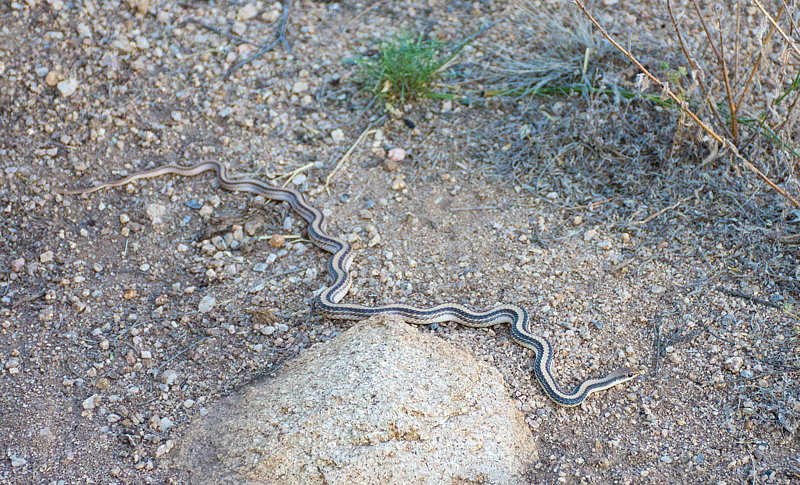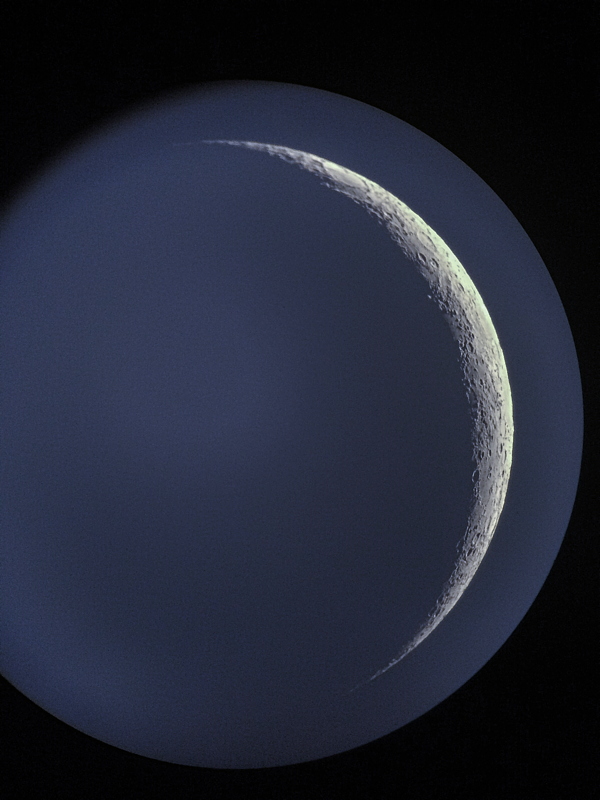Smokey Sunset, Critter, Jupiter/Venus/Moon;
iPhone Omega Centauri & M4; D7200 M20, M8, M17
Posted: 19 June 2015
The Kearny wildfire, 30 miles to the north of Cassiopeia Observatory, grew to 1100 acres with 15% containment by late Thursday morning, 18 June. Unlike on Wednesday (as seen in yesterday's report), very little smoke was visible from Oracle on Thursday as the fire was moving northward. The fire was reported as 25% contained as sunset approached.
|
Open: Thursday, 18 June 2015, 1848 MST Temperature: 104°F |
Session: 838 Conditions: Clear, smokey sky low in west-north |
1857 MST: viewed Venus, 83X and 222X. Then Jupiter, 222X. At 83X could see the Great Red Spot rotating out of view. 1901 MST: viewed the crescent Moon, 83X. 1911 MST: returned to Jupiter for observing at 83X and 222X. 1921 MST: the Galilean Moons Ganymede, Io, and Europa were visible. 1926 MST: Europa's shadow on the planet's disk was faintly visible near limb, 222X.
As sunset approached I noticed that the Sun's disk was very red due to the smoke from the Kearny wildfire. Stepped outside of the observatory and took these photos:


As I headed back to the observatory saw this critter:

He was about 5' long.
1942 MST: final look at Jupiter, 222X. Then slewed the 8" LX200-ACF to the crescent Moon. There were some nice views at 222X although the contrast was low a few minutes after sunset. While observing the Moon at 222X I saw an airliner fly in front of the moon. That was neat.
I then mounted the iPhone 5s on the telescope using the MX-1 Afocal Adapter. Took this afocal 77X photo of the Moon with the iPhone:

This is how the live view of the Moon looked on my Apple Watch:

2004 MST: terminated the first and second of five Kissing Bugs seen in the observatory this night. I then set up the D7200 DSLR on a tripod for western sky photography. I did a focus test exposure at FL 140mm with the Gerd Neumann Bahtinov Mask for Camera Lens using Jupiter. This is how the exposure appeared, showing the nicely infocus diffraction pattern:

2022 MST: the western sky, D7200 DSLR, f/5.6, 1/4sec, ISO 1600, FL 18mm:

Mouseover or tap on image for labels
Some Earthshine on the Moon is visible in the photo above. The SkyShed POD observatory and 8" telescope are also in the photo.
2023 MST: Kissing Bug #3 terminated. 2026 MST: viewed Saturn, 77X. Four moons visible. 2028 MST: Kissing Bug #4 terminated.
Slewed to Omega Centauri, very low in the southern sky. It was faintly visible against a still bright sky. Terminated Kissing Bug #5.
2048 MST: stepped back outside of the observatory and took this D7200 DSLR photo, f/5.6, 10 seconds, ISO 1600, FL 18mm:

Mouseover or tap on image for labels
I photographed Omega Centauri and M4 globular clusters using NightCap Pro on the iPhone 5s, afocal 77X:
Omega Centauri

M4

Amazing how well Omega Centauri appears in a smartphone photo using NightCap Pro.
2101 MST: ended iPhone imaging and set up to try to image asteroid Icarus (Mag +13.9). Powered on the GC Wi-Fi Adapter and used SkySafari Pro on the iPhone to GOTO Icarus. The asteroid was too faint to see, especially with some smoke in the sky from the wildfire. I tried to image the asteroid with three 5-minute, ISO 12800, exposures at prime focus, separated by 15 minutes each. Unfortunately I could not ID the asteroid; no movement was evident when the images were merged. This is one of the images and someplace in there is the asteroid Icarus:

I will try again on the next session, using a longer interval between exposures.
Slewed to M20 (Trifid Nebula) and began waiting for it to rise higher. 2254 MST: took this prime focus image, full-frame, unguided, 1 minute, ISO 12800:

Then M8 (Lagoon Nebula), prime focus, full-frame, guided, 1 minute, ISO 12800:

And M17 (Swan Nebula), prime focus, full-frame, guided, 1 minute, ISO 12800:

I am still amazed by the DSO imaging capabilities of the D7200 DSLR.
2304 MST: ended imaging. Removed the DSLR from the 8" telescope and viewed M17, M8, and M20 at 83X. Then viewed Saturn, 83X and 222X. The moons Titan, Dione, Tethys, and Rhea were visible. The moon Iapetus might have been faintly viewed but seeing was getting worse from clouds approaching from the southwest.
Lastly, viewed M16 (Eagle Nebula), 83X. Tried to image M16 using the iPhone with NightCap Pro but the nebulosity was way too faint.
|
Close: Thursday, 18 June 2015, 2355 MST Temperature: 80°F |
|
Comments are welcome using Email. If you are on Twitter you can use the button below to tweet this report to your followers. Thanks.
Cassiopeia Observatory Home Page
Copyright ©2015 Michael L. Weasner / mweasner@me.com
URL = http://www.weasner.com/co/Reports/2015/06/19/index.html
